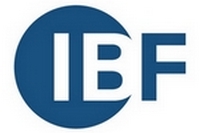Veranstalter:
IBF Solutions GmbH
Bahnhofstraße 8
A-6682 Vils
Seminarsuche:
❱ www.ibf-solutions.com/

WEBINAR: Designing safe machines - risk assessment in practice - 2470-WEB-E
In just one day, technical designers and technical planners learn how risk assessments should be integrated as efficiently as possible into the development processes of machines or systems.
In just one day, technical designers and technical planners learn how risk assessments should be integrated as efficiently as possible into the development processes of machines or systems.
Bildungsanbieter:
IBF Solutions GmbH
Veranstaltungsart:
Webinar
Themenfeld:
CE-Kennzeichnung/Grundlagen
Ort:
1 Online
Beginn:
28-01-2025
Ende:
28-01-2025
Preis in €:
870 EUR
Detailbeschreibung:
The machinery directive requires according to annex I:
"The manufacturer of machinery ...must ensure that a risk assessment is carried out ... The machinery must then be designed and constructed taking into account the results of the risk assessment."
This legal requirement for the integration of safety in the design processes is one of the most important success factors for the development of sufficiently safe machines or plants!
In this one-day seminar, you will learn how to implement these requirements in the daily design processes as efficiently and pragmatically as possible.
Without legal details - pure practical relevance!
This seminar shapes the first day of our two-day practical seminar "Efficient CE marking and risk assessment of machines and plants". On the second day, you will gain valuable background knowledge and learn how to efficiently implement the other points of the conformity assessment procedure according to the Machinery Directive (beyond the risk assessment).
Seminar program
Introduction and Overview
- The important role of the designers in the CE processes.
- Introductory example: Why seemingly good solutions do not always meet the legal requirements.
- Legally required risk assessment: WHO has to do WHAT and WHEN?
- Cooperation between different departments: mechanical engineering, control engineering, technical documentation, etc.
- Safety arises (mostly) in a team: important interfaces to sub-suppliers and customers.
- What does "integration of safety" mean?
- Which standards support safe design? Do these have to be applied?
- Caution when delegating design work or risk assessments to third parties!
- Attention! The design must be based on the law, not (only) on customer requirements!
Systematic risk assessment according to EN ISO 12100
- Risk assessment according to EN ISO 12100 - How the legal requirements are met as efficiently as possible!
- What has to be considered in "reasonably foreseeable misuse" - and what not.
- Figure 1 from EN ISO 12100 as a perfect guide through risk assessment and risk reduction.
- Relationships between EN ISO 12100 and the control engineering standards EN ISO 13849-1 and EN ISO 13849-2.
Technical and design requirements
- Which technical requirements are required by law.
- Strategies for the "inherently safe design".
- Why non-separating protective devices (e.g. light curtains) are not always suitable for achieving the required risk reduction.
- Calculation example for electro-sensitive protective devices (ESPEs).
- What you should pay attention to when selecting protective devices (separating or non-separating).
- When protective devices have to be interlocked - when guard lockings are required.
With the help of several exercises and examples, you will learn the practical approach to pragmatically identifying relevant hazards in the design process, assessing the associated risks and selecting and documenting suitable (and economically justifiable) solutions for risk reduction.
You will find out why design engineers tend to exaggerate safety-related solutions and sometimes result in high costs for their company or customers. Less is often more - but only according to the legally permitted concept!
Specially suitable for
- Designers and planners
- Technical managers and design managers
- Project leaders and project managers
- Career starters in design departments